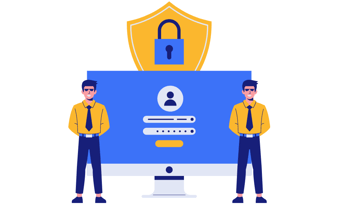Securing Your Enterprise Against the Shadows of the Dark Web
In the vast expanse of the digital universe, there exists a hidden quadrant known as the dark web. This obscure sector is often a haven for nefarious activities, and businesses, irrespective of their size, are not immune to its perils. Understanding the dark web and integrating ethical hacking into your cybersecurity strategy is no longer optional; it's a necessity for safeguarding your enterprise's digital frontier.
What is the Dark Web?
Imagine an iceberg floating in the ocean. The internet that we routinely access is just the tip, while the dark web lurks below, vast and unseen. It's a part of the internet not indexed by conventional search engines, requiring specific tools and knowledge to access. Here, anonymity reigns, making it a breeding ground for illegal activities, including the sale of stolen data and malicious software.
Why Should Small Businesses Care?
You might think your business is too small to attract attention from the denizens of the dark web. Think again. Cybercriminals often target small businesses, banking on their typically less robust security measures. A breach can be devastating, leading to financial loss, damage to reputation, and legal repercussions.
The Role of Ethical Hacking
Ethical hacking, or penetration testing, is like a fire drill for your cybersecurity defenses. Ethical hackers, armed with the same skills as their malicious counterparts, systematically probe your network for vulnerabilities. However, their goal is not to exploit but to identify and rectify weaknesses before they can be leveraged by attackers.
How to Fortify Your Business
Data Backup: Regularly back up your data. In the event of a cyber-attack, this can be your lifeline, enabling you to restore lost or compromised information.
Employee Education: Your employees can be your strongest asset or your weakest link. Educate them about cybersecurity best practices and the importance of vigilance.
Access Controls: Implement robust access controls. Ensure that employees have access only to the information they need for their roles, reducing the potential impact of a breach.
Monitoring Services: Utilize monitoring services that can detect and alert you to potential threats, particularly those emanating from the dark web.
Call to Action: Secure Your Business with Bit by Bit
At Bit by Bit, we understand the intricacies of cybersecurity and the unique challenges faced by small businesses. Our team of experts is adept at uncovering vulnerabilities and fortifying defenses, ensuring your business remains resilient in the face of digital threats.
Don't wait for a breach to realize the importance of cybersecurity. Contact Bit by Bit today at 877.860.5831 or visit our website at www.bitxbit.com. Let us be your ally in the digital age, safeguarding your business with cutting-edge security solutions tailored to your needs.
#EthicalHacking #SmallBusinessSecurity #Cybersecurity #DarkWebDefense #BitByBit


.png?width=527&height=301&name=Hacker%20(1).png)
.png?width=497&height=284&name=Untitled%20design%20(1).png)

